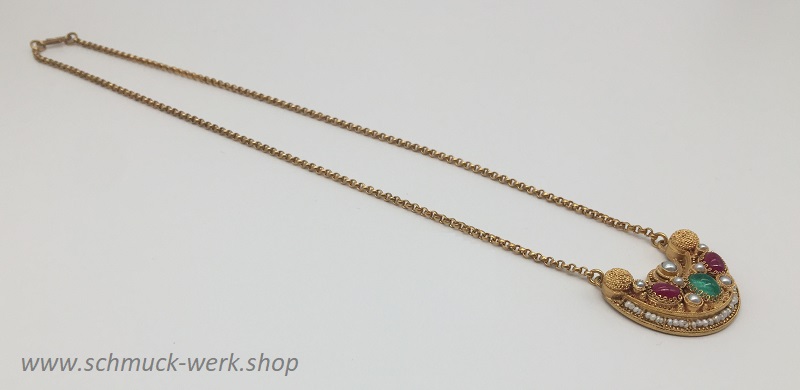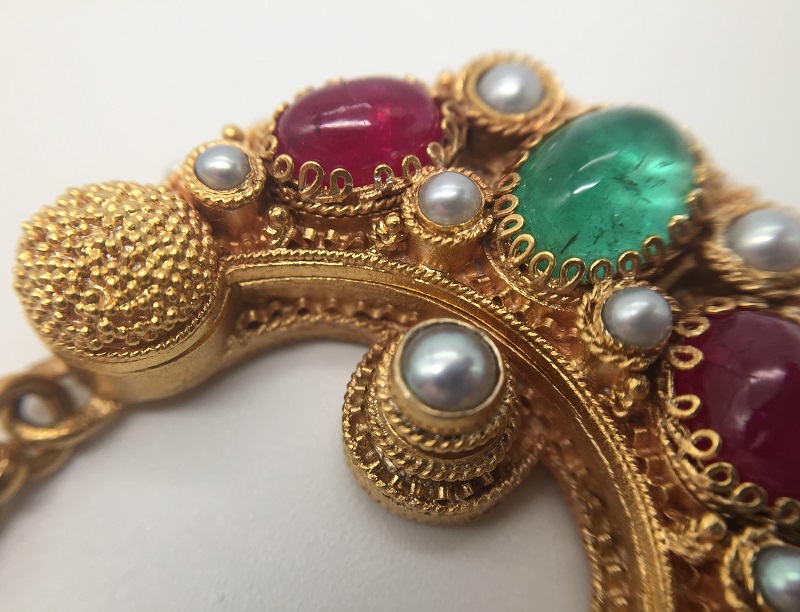The Mainz gold jewelry, formerly better known as the so-called "Gisela jewelry" or "Jewellery of the Empress Agnes” has been considered one of the main works of medieval European goldsmithing for decades. The exciting stories about the individual finds, the extremely wealthy collector Baron Maximilian von Heyl or even the later acquisition of the treasure by Kaiser Wilhelm II and the subsequent transfer of the Heyl collection to what later became the Bode Museum in Berlin are still fascinating today.
In addition to the world famous eagle fibula, the big gold hump fibula and the rare necklace, another object stands out above all in terms of the enormous quality of the goldsmith's work: a gold one Crescent Earring, which was discovered in 1904 during demolition work in the area of the former Mainz Stadionerhof barracks at a depth of four meters together with a Byzantine gold coin. The latest investigations even suggest the existence of a former imperial palace in the middle of the city of Mainz.
It was that outstanding gold earring that served as our model for a replica of this remarkable piece of medieval jewelery in the form of a gold-plated silver necklace.
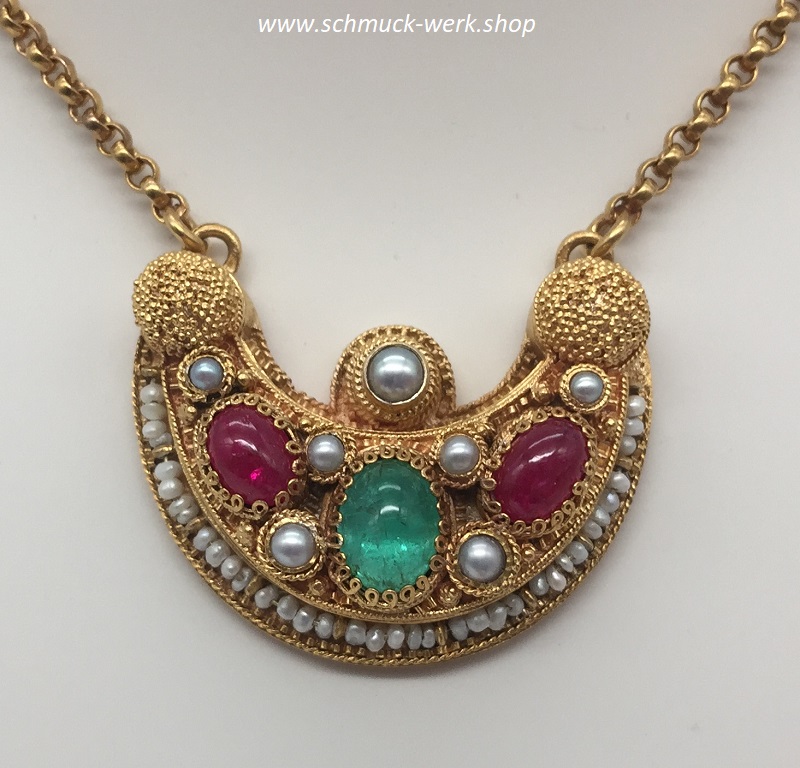
As always, the greatest possible attention to detail in the reproduction of this historical gem was particularly important to us. Since all or at least some of the gemstones on the original earring from “Giselaschmuck” are probably later additions, we have also taken the liberty of reinterpreting the gemstone jewelery on the medieval earring for our pendant version: two blood-red rubies and a precious emerald in the center of the pendant. We have also added real seed pearls to the lower pearl wreath that was missing from the original.
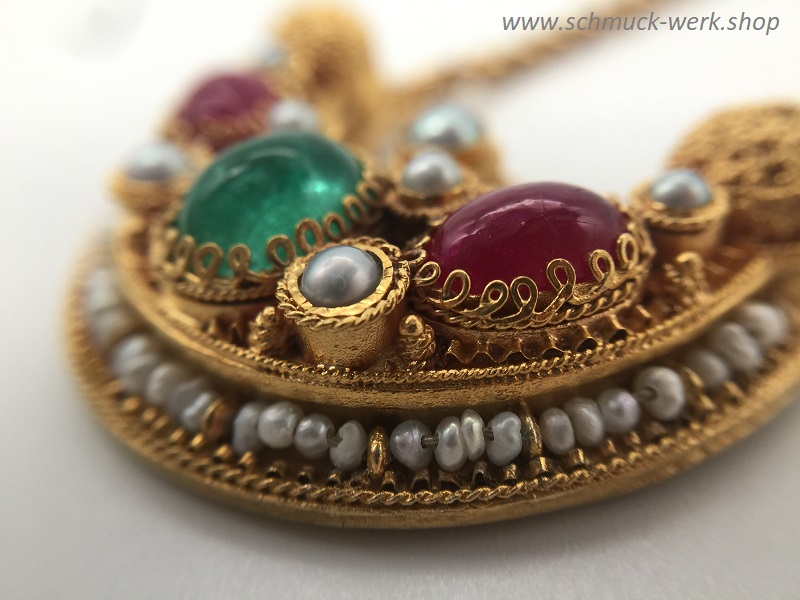
All of the details of the pendant were painstakingly manufactured individually over a period of four weeks: the base made of sheet silver with true-to-the-original filigree jewelery on the back of the pendant, the decorative wavy bands around the earring, the settings for the pearls with cord wire borders, as well as the three gemstone settings with additional eyelet prongs, the many tiny "beehives" made of corded wire - even every single bead for the two finely granulated humps on the left and right of our trailer.
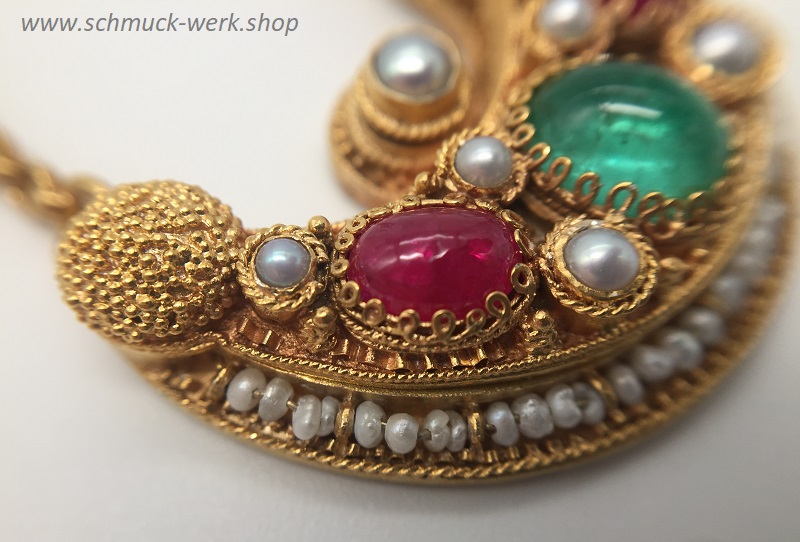
From our - totally immodest 😉 - point of view, a unique goldsmith replica was created, which is in no way inferior to the medieval charm and the enchanting charisma of the original earring from the "Giselaschmuck".
We would be happy to make the pendant for you as a pair of earrings, with modified gemstone jewelry or entirely out of gold - please Ask us just afterwards….
